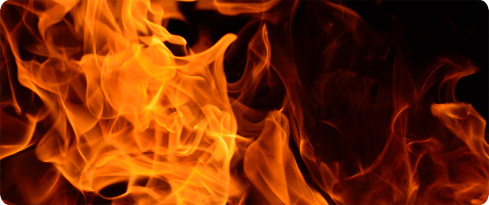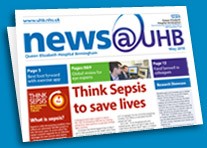Your views

Your feedback is vital to us as we continue to increase the quality of our services.
You are here:
Date: 27 January 2025
Time: 16:54

Regional burns unit reaching out to community
Story posted/last updated: 11 October 2018
A burn injury is for life and the scars are physical as well as psychological, presenting life-long challenges for the individual and their families.
What many people don’t know is that children and the elderly are the most vulnerable, and the majority of injuries occur as a result of an accident that could easily have been prevented.
On 17 October, burn specialists from University Hospitals Birmingham are highlighting National Burns Awareness Day 2018, supported by West Midlands Fire and Rescue and charity, Burn Aid.
Nurses and medics based at the Regional Burns Centre at the Queen Elizabeth Hospital Birmingham (QEHB), will be reaching out to shoppers to raise awareness of burn injuries, burn prevention, and first aid in the event of burns.
Visiting Northfield Shopping Centre, the team aim to highlight some of the common causes of the burns they treat and how to help in those first moments after an accident occurs.
The Children’s Burns Trust, together with the British Burn Association, have released an exclusive insight from the International Burn Injury Database to raise awareness of burn prevention and burn-related first aid on National Burn Awareness Day 2018.
Data shows that NHS burns services treated more than 15,000 patients for burns and scalds in 2017.
Specialists hope that by drawing attention to the sheer volume of patients with burn injuries treated by the NHS, more people will understand the importance of burn prevention and good first aid, which are vital to reduce the number of injuries.
The figures released include those patients treated in burns centres, burns units and burns facilities across England and Wales. It does not include those seen with minor burns in Emergency Departments.
As well as the physical and emotional impact a burn injury has on the individual and their family, the cost to the health service is staggering. In 2017, more than 40 admissions to NHS burns services were classified as extremely severe – costing more than £95,000 each to treat.
Hot drinks are the most common cause of scald injury for children and older people – followed by contact with electric cookers, irons and hair straighteners and almost all injuries in the young or old occur at home.
Many of these burns or and scalds are entirely preventable, Clinical Educator for Burns at QEHB, Laura Presley-Hague, said: “A vast majority of the burn injuries we see are accidents. Whether these were experienced by the very young, adults or older people, most could have been avoided entirely.
“We hope by being out in our community close to the hospital, in Northfield, we can get generate some awareness to help prevent these accidents from happening in the first place, but also how to help in those moments after a burn that could help to reduce the often lifelong impact of serious burns.”
Facts and figures
- Hot drinks are the most common cause of scald injury in children – followed by contact with electric cookers, irons and hair straighteners.
- 625 children a month require admission to an NHS burns service following a burn or scald injury. This figure only relates to the more serious injuries - it does not include the thousands seen by Emergency Departments.
- 289 children a month require admission to an NHS burns service following injury with hot liquids, mainly tea and coffee spills. This figure only relates to the more serious injuries - it does not include the thousands seen by Emergency Departments.
- Sunburn is a notable cause of injury in the 5 – 14 year age group, alongside seasonal activities such as fireworks and bonfires.
- The average cost to the NHS for a major burn is £95,000 – it is estimated that this is one third of the overall societal costs.
- 4,867 children under the age of 5 were so badly burnt that they had to be admitted to a NHS specialist burns service in 2017 – more than 13 toddlers every single day.
- Irons and Hair Straighteners take longer than you think to cool down – more than 667 children (0 –14 years) in 2017 were treated for severe burns from them.
- The most common place of injury is the home for children and the elderly. For adults it’s the workplace.
- There is a clearly defined relationship between high rates of burn injuries and areas of social deprivation.
First Aid
Good first aid following a burn or scald can make an enormous difference in recovery time and the severity of scarring.
Two important things to remember are:
Cool, Call, Cover
- Cool the burn with running cold tap water for 20 minutes, and remove all clothing and jewellery (unless it is melted or firmly stuck to the wound)
- Call for help - 999, 111 or local GP for advice
- Cover with cling film or a sterile, non-fluffy dressing or cloth. Make sure the patient is kept warm
Stop, Drop, Roll
"Stop, Drop and Roll" is used when clothing catches fire. Children can get confused about when to stop, drop and roll. It is important to know when to do this.
Children who do not have a good understanding of stop, drop and roll will sometimes do this if they burn a finger or need to get outside when the smoke alarm sounds.
Only use stop, drop and roll when clothing catches fire.

Getting here
Information about travelling to, staying at and getting around the hospital.

Jobs at UHB
A great place to work. Learn why.
news@UHB


RSS feed
Subscribe to our news feed


